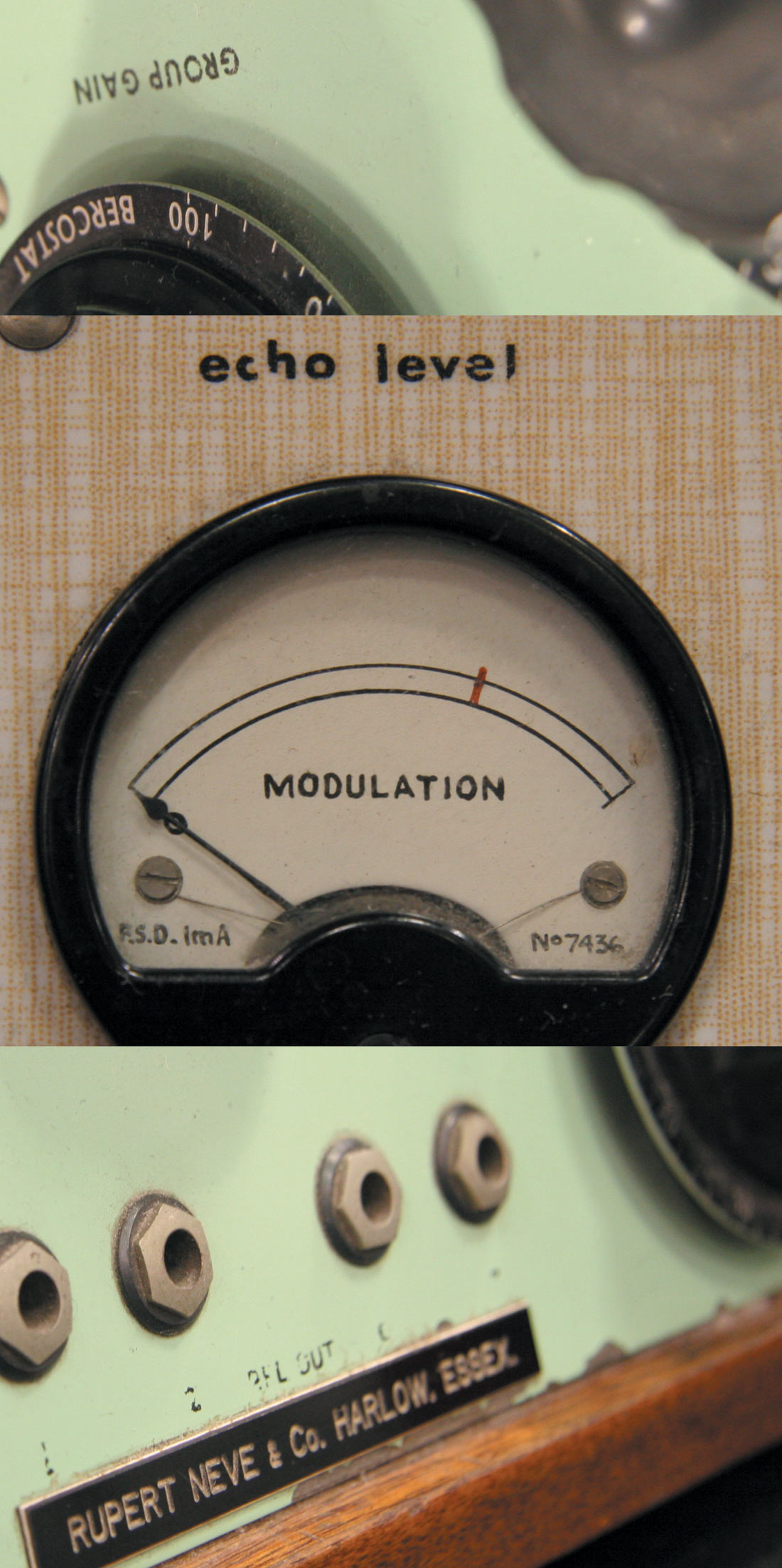When I first pulled the R92 out of the box, I was
shocked at how light it was. In fact, my first reaction was disappointment because I have such a strong association with heavy being better. Once I learned what this mic is all about, I realized its light weight is a feature and part of its identity. To understand the R92, you need to know a little ribbon mic history.
Directional microphones exhibit proximity effect and therefore have an ideal distance at which their frequency response is flattest. The RCA 44 was designed at a time when close mic'ing wasn't normal practice and only a few mics (and sometimes only one!) were used to record a band in a room. So its response is optimized for sources fairly far away. The RCA 44's low-end response starts to rise when it's within 6 ft of the source. AEA's popular R84, on the other hand, has its flattest response much closer to the source-in the 2 ft range. The R92 was designed in response to requests (from some guitar-playing AEA employees) for a mic that would sound great for recording guitars when placed right up against the amp grill. According to the manual, the R92 is optimized for distances of 6"-12", and it does sound great on guitar amps, even at proximities approaching zero. It sounds great on a lot of other sources as well.
Putting ribbon mics, which are known to be fragile, in close proximity to a loud source like a guitar cabinet, can be a little nerve wracking. The R92's ribbon is over 2" long, making it more than twice as long as the ribbon in a Coles 4038. Longer ribbons handle bass better. Ribbons have
little horizontal crinkles which give a little as the ribbon moves back and forth. The more crinkles spread over the height of the ribbon, the more room there is for give. Because it's unusually long, the R92's ribbon has the ability to move further before it hits its elastic limit and is damaged. Also, the R92's long ribbon is tuned to resonate at 16.5 Hz. (The Coles 4038 resonates at 45 Hz and has fine-meshed screens for air-damping.) Resonance gives a mic its character. The lower the resonance, the more you just hear the actual sound.
In contrast, a condenser mic has a tensioned diaphragm. Like a tightened drum head, a stretched diaphragm also has a natural resonance. Traditional large-diaphragm condensers will have natural resonance structures and high Q peaks in the 8-12 kHz range. When they get hit with high-frequency energy (e.g., cymbals), they'll ring in some very narrow bands in that 8-12 kHz range. Your ear is pretty good at hearing in that range, and more importantly, that's where your ear starts to compress. That's why bringing up the high-frequency shelf EQ on a condenser can be unpleasant and lead to sibilance, but if you EQ a ribbon to have just as much high end as a condenser, the ribbon will sound smoother.
How does the R92 sound? Well, great sounds great, so "What does it sound like?" is the better question. I put it up against a Coles 4038, which of course is a great sounding mic too, to get a sense of the differences. I got a guitar tone and A/B'ed between the Coles and the R92. Compared to the Coles, the R92 had a presence that felt like getting hit with a very knuckley fist. It had more chest and shoulder frequencies than the Coles. I think what's actually happening is that it's flatter than the Coles and doesn't have the guttural bump that the Coles gets from its ribbon being tuned at 45 Hz.
I had a session with a great trumpet player named Justin Ray, who brought in the most recent Terence Blanchard album as a tonal reference. Justin had done his research and spoken to Terence about how he got his tone (which I'm pretty sure was a U 67 though a 1073). We tried a few different combinations of mics and preamps, and regardless of mic preamp, Justin consistently chose the R92 out of the mics we compared. Our final choice ended up being the R92 into a Pendulum Quartet II. Since this was straight-ahead jazz, we had the whole band playing in the same room. The R92's design for close mic'ing was very helpful in reducing drum bleed into the mic and still getting a great trumpet tone. Its close mic'ing strengths also made for more consistent positioning of the trumpet in the room preventing a change in location and therefore a change in the phase relationships that we had established while getting sounds at the beginning of the session.
The AEA R92 is small and light-easy to position tightly or out on the end of boom. Its swivel mounting system makes all sorts of positions and angles possible. This is why I was wrong to be disappointed with its weight; the size and weight are part of the premise of its design. I've yet to hear a ribbon mic that I didn't like, so of course I really like the R92. While other ribbon mics can be used up close, I don't know of any others that were specifically designed as close mics, which I think is how most people use them. It's definitely worth checking out, and it should by no means be treated as just a close mic or just a guitar mic. I'm sure you'll like it in all the classic ribbon mic applications. ($900 MSRP; www.ribbonmics.com)
Tape Op is a bi-monthly magazine devoted to the art of record making.




_disp_horizontal_bw.jpg)